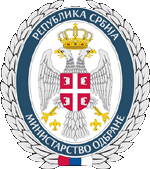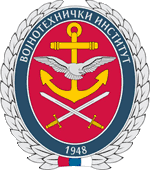|
REPUBLIC OF SERBIA MINISTRY OF DEFENCE
MINISTRY OF DEFENCE Material Resources Sector Defensive Technologies Department
|
Numerical simulation of fragmentation warhead mechanisms
Faculty of Mechanical Engineering,
Weapon Systems Department, University of Belgrade, Serbia, Slobodan jaramaz Faculty of Mechanical Engineering, Weapon Systems Department, University of Belgrade, Serbia, sjaramaz@mas.bg.ac.rs dejan micković Faculty of Mechanical Engineering, Weapon Systems Department, University of Belgrade, Serbia, dmickovic@mas.bg.ac.rs nenad miloradović Yugoimport FDSP, Belgrade, 964nmb@gmail.com
Abstract: Determination of velocity of fragments and their rejection angles is of the critical importance in the fragmentation warheads design and evaluation of warhead efficiency. It is well known that simplified analytical approaches, like Gurney equations and Taylor formula, provide only a rough estimate of velocity vector of fragments. Therefore, numerical approach is logical and inevitable choice when the more accurate calculations are needed. In the present paper, the commercial multi-purpose program Abaqus, based on the finite element method, is used for simulation of the mechanism of explosive propulsion. Applied modeling techniques as well as the procedure of the model creation through the modules of Abaqus have been presented. Experimental results of a well documented test of the fragmentation warhead with premade fragments are compared with the simulation results of the corresponding numerical model. Very good agreement between experimental data and the numerical results suggests that Abaqus can be successfully used for simulation of warhead mechanisms. Keywords: fragmentation warhead, explosive propulsion, numerical simulation, Abaqus.
|
|||||
|
||||||

